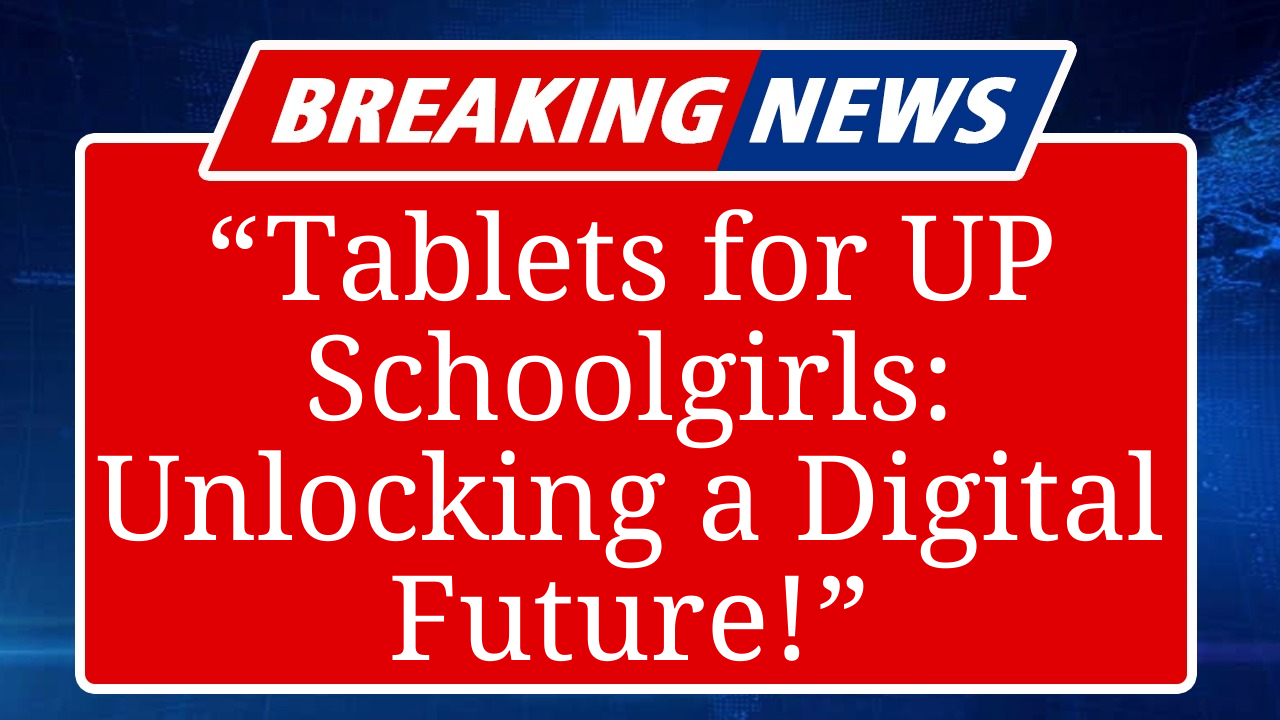“The Uttar Pradesh government’s free tablet scheme under Beti Bachao, Beti Padhao aims to bridge the digital divide for schoolgirls. Targeting over 10 lakh students, it provides tablets to enhance education, promote digital literacy, and empower girls. The initiative supports academic growth, online learning, and skill development, aligning with India’s vision for women-led development.”
UP’s Free Tablet Initiative Boosts Girls’ Education
Scheme Overview
The Uttar Pradesh government, under the Beti Bachao, Beti Padhao (BBBP) campaign, has rolled out a free tablet distribution scheme targeting schoolgirls in classes 10 and 12 across the state. Launched to promote digital inclusion, the initiative aims to provide over 10 lakh tablets to female students in government and aided schools, ensuring access to modern educational tools.
Empowering Digital Literacy
The scheme equips girls with tablets preloaded with educational apps, e-books, and access to online learning platforms. This move addresses the digital divide, particularly in rural areas, where access to technology remains limited. By fostering digital literacy, the program prepares girls for competitive exams and future careers in tech-driven fields.
Alignment with Beti Bachao, Beti Padhao
Introduced in 2015 by Prime Minister Narendra Modi, BBBP focuses on saving and educating the girl child. The tablet scheme aligns with its goal of improving girls’ education by reducing dropout rates and enhancing learning outcomes. In UP, the initiative complements efforts to improve the child sex ratio (CSR) and promote gender equality.
Implementation and Reach
The distribution, managed by the UP Education Department, prioritizes girls in economically disadvantaged areas. In 2024-25, districts like Etah, Mainpuri, and Mathura, previously flagged for high dropout rates, are key focus areas. Tablets are distributed through school authorities, with training sessions for students and teachers to maximize usage.
Impact on Education
Data from the Ministry of Education shows UP’s gross enrollment ratio (GER) for girls in secondary schools improved from 75.51% in 2015 to 78% in 2024. The tablet scheme is expected to further boost enrollment and retention by providing access to digital resources, especially post-COVID when online learning became critical.
Challenges and Criticism
Despite its promise, the scheme faces hurdles. Reports highlight inadequate school infrastructure, such as unreliable electricity and internet connectivity in rural areas, limiting tablet usage. Critics, including opposition leaders, argue that funds should also address basic facilities like toilets to reduce dropout rates, which remain high at 37% before higher secondary in some regions.
Community and Social Impact
The initiative has sparked community engagement, with awareness campaigns promoting girls’ education. Programs like “Selfie with Daughters” and “Beti Janmotsav” complement the scheme, fostering societal acceptance of girls’ potential. The tablets also enable access to vocational training resources, empowering girls from minority and marginalized communities.
Future Prospects
As BBBP enters its second decade, UP’s tablet scheme is a step toward women-led development, aligning with India’s Viksit Bharat 2047 vision. Plans to expand the program include integrating AI-based learning tools and collaborating with tech firms to provide affordable internet access, ensuring sustained impact.
Disclaimer: This article is based on recent reports, government announcements, and data from reliable sources like the Ministry of Women and Child Development, The Hindu, and Times of India. Information is accurate as of September 2, 2025, and subject to change based on new developments.

